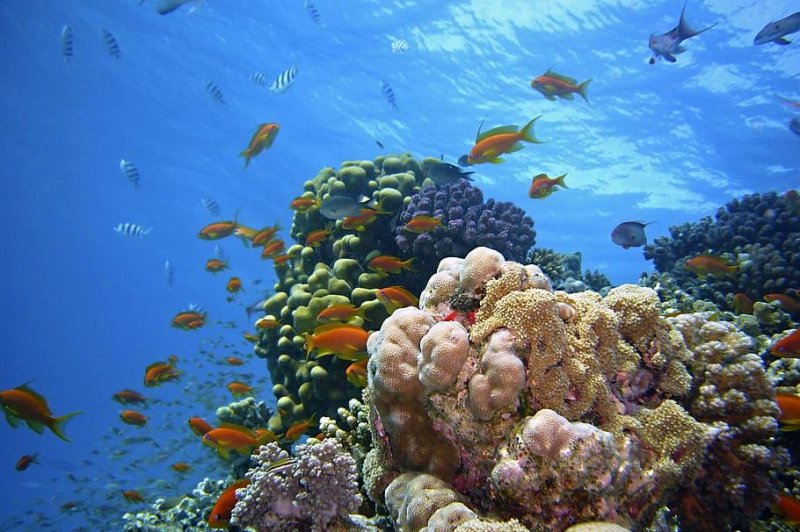By Brooks Hays

Slow and steady diversification and a resilience to extinction explains the ocean's exceptional levels of biodiversity. Photo by Pxfuel/CC
Feb. 28 (UPI) -- Researchers have uncovered the source of the ocean's remarkable biodiversity.
According to the latest research, the ocean wasn't host to a rapid period of diversification. Likewise, the most diverse groups of marine species don't enjoy higher rates of speciation, or origination.
Instead, scientists found several marine lineages have maintained a slow and steady pace of diversification over long periods of time. Mobility and adaptability has allowed these lineages of fishes, arthropods and mollusks to avoid extinction.
For the study -- published Friday in the journal Science -- scientists analyzed some 20,000 genera of fossil marine species from the past 500 million years, as well as roughly 30,000 genera of living marine animals.

Slow and steady diversification and a resilience to extinction explains the ocean's exceptional levels of biodiversity. Photo by Pxfuel/CC
Feb. 28 (UPI) -- Researchers have uncovered the source of the ocean's remarkable biodiversity.
According to the latest research, the ocean wasn't host to a rapid period of diversification. Likewise, the most diverse groups of marine species don't enjoy higher rates of speciation, or origination.
Instead, scientists found several marine lineages have maintained a slow and steady pace of diversification over long periods of time. Mobility and adaptability has allowed these lineages of fishes, arthropods and mollusks to avoid extinction.
For the study -- published Friday in the journal Science -- scientists analyzed some 20,000 genera of fossil marine species from the past 500 million years, as well as roughly 30,000 genera of living marine animals.
RELATED Curbing nutrient overload helps coral resist bleaching
Their findings showed that while many other lineages were forced to start from ground zero after extinction events, fishes, arthropods and mollusks have been both adaptable and resilient.
"Being a member of an ecologically flexible group makes you resistant to extinction, particularly during mass extinctions," lead study author Matthew Knope, assistant professor of biology at the University of Hawaii at Hilo, said in a news release. "The oceans we see today are filled with a dizzying array of species in groups like fishes, arthropods, and mollusks, not because they had higher origination rates than groups that are less common, but because they had lower extinction rates over very long intervals of time."
Scientists have previously hypothesized that higher rates of speciation were essential to diversification -- that the ability to originate more species allowed the most diverse lineages to adapt to a wide variety of ecological niches. But the latest research found the opposite.
RELATED One billion-year-old green seaweed fossils unearthed in China
The paleontological data showed diversification was actually associated with slower rates of origination.
"Perhaps the fable of the tortoise and the hare is apt in explaining marine animal diversification: some groups jumped out to an early diversity lead only to be surpassed by other groups that were more ecologically diverse and less evolutionarily volatile, with steady diversification rates and strong resistance to mass extinctions," Knope said.
Authors of the new study suggest an improved understanding of how biodiversity develops can help scientists and policy makers grapple with the likely impacts of environmental disruption, like climate change, on today's marine animals.
RELATED Data analysis shows evolutionary burst, decline of Mesozoic sea reptile
"Paleontology can help us identify traits that helped species survive and thrive in the past, including during mass extinctions," said co-author Andrew Bush, an associate professor of ecology and evolutionary biology at the University of Connecticut. "Hopefully, research like this can help us plan for the effects of environmental disruption in the coming decades."
RELATED Biologists publish first global map of fish genetic diversity
No comments:
Post a Comment